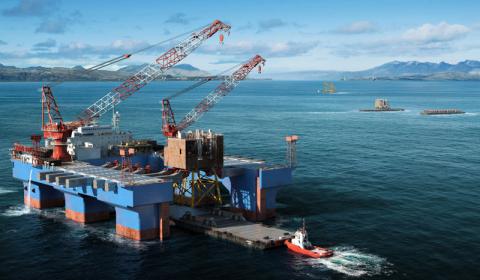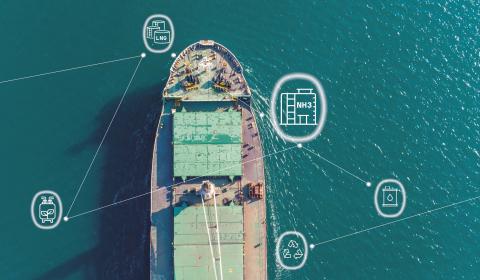
A creative solution for revolutionizing UK decommissioning
Forth and Tay Decommissioning, a newly formed alliance created by public-private partnership Dundeecom, is developing an innovative, low-cost solution to keep North Sea decommissioning local.
When it comes to the decommissioning of large offshore oil and gas platforms, the UK has a problem. The traditional way to decommission such large assets is to transfer them to the nearest ultra-deepwater (UDW) port – a quayside area where water depth reaches more than 24m – and perform the required work there.
However, the UK does not have natural UDW ports, and the dredging process required to create sufficiently deep artificial ports is considered both prohibitively expensive and environmentally unsound.
Because of this, most North Sea oil and gas assets are transferred to Norway’s UDW ports for decommissioning, taking valuable business from the UK. To encourage North Sea companies to decommission locally, the Scottish government called for a feasibility study into building UDW ports in Scotland.
Through its Aberdeen-based subsidiary, Maritime Assurance and Consulting (MAC), Bureau Veritas Solutions Marine & Offshore is collaborating with Forth and Tay Decommissioning alliance (F&TD) to offer an innovative, alternative decommissioning solution in the North Sea.
Bringing the quay to deep water
Though still in its early stages of development, one answer to the UK’s decommissioning problem may lie in what F&TD and BV Solutions M&O call a “virtual deep-water port”. The idea is to use the UK’s natural inshore UDW areas, which are not near the quayside, and create a ‘virtual’ floating quayside. Heavy Lift vessels would bring assets to the floating quay, and transfer modules, or even entire topsides, onto a system of barges. The barges would then be towed to reception facilities for onshore cleaning and processing.
With a new approach, challenges and benefits
F&TD and MAC’s innovative concept brings with it a range of practical questions. One of the biggest concerns is the risk involved in transferring a heavy module or topsides—which can weigh between 2,000 and 25,000 metric tons—to a barge, and then transport it safely for offload and disposal. Another major consideration is the system of barges: the team will need to determine the design of the barges, and how many to build or charter.
A full cost benefit analysis also needs to be carried out. The estimated cost of decommissioning for the UK Continental Shelf is £50 billion, and the Oil & Gas Authority (OGA) are looking to reduce that cost by 35%. As F&TD and MAC continue defining the scope of this project and accompanying practicalities, the question of cost looms large.
However, the potential benefits for floating quayside decommissioning go far beyond cost reduction. “If the solution is feasible,” says Callum Falconer, Chief Executive of Dundeecom, “it could be used as a bi-directional transfer station. We could use the barges not only for the decommissioning of platforms, but for construction of new offshore installations, including assets for the renewable energies market.”
A strong partnership pushing the limits of decommissioning
Bureau Veritas subsidiaries MAC and TMC Marine have been invaluable to this project, thanks to their expertise in Salvage and Wreck Removal and Marine Claims and Accident Investigation. MatthewsDaniel, another Bureau Veritas subsidiary, provides further support with specialty services in Loss Adjusting and Marine Warranty Surveying services.
Chief Executive
Dundeecom
Bureau Veritas with its family of companies was the obvious choice for this project, We have a very good working relationship, and there’s no denying that partnering with BV Solutions M&O elevates our project in the eyes of the offshore world.










